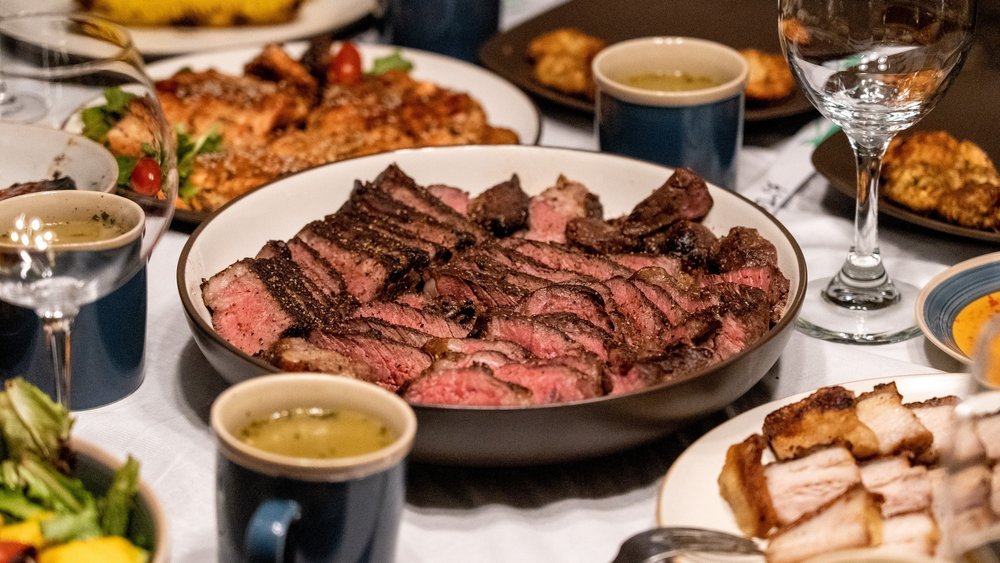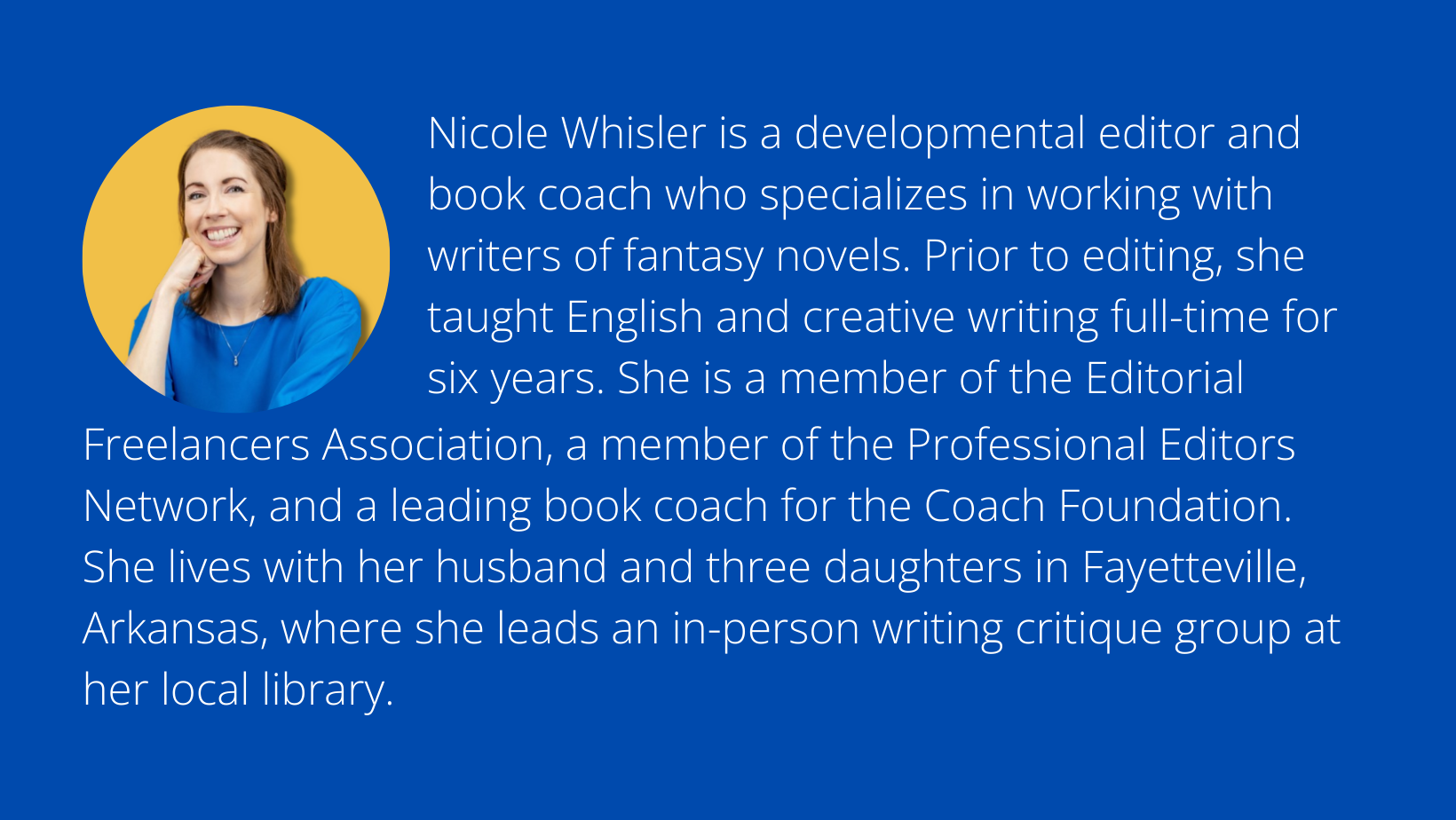Whisler Edits Blog

4 Ways to Incorporate Worldbuilding Naturally
Discover in this post …
how worldbuilding helps immerse readers in a novel.
common mistakes writers make when worldbuilding.
four strategies to integrate worldbuilding details in a natural way.
The best kinds of books are immersive. Whether you write fantasy, science fiction, crime/suspense, realistic fiction, or any other genre, you’d probably be delighted if a reader told you, “Your characters and world seemed so real to me. I felt like I was inside the book. I couldn’t put it down!”
That’s often thanks to the writer’s careful attention to worldbuilding, which dictionary.com defines as “the process of developing a detailed and plausible fictional world for a novel or story.” In other words, worldbuilding is creating a backdrop, a history behind your story, to give it depth/believability and to make it your own.
Think of your experience reading some of the most popular novels ever written. Many best-selling books have an immersive setting, one that transports readers to another space and/or time. We’ve fought to reach the gates of Mordor with Frodo, traveled to Hogwarts with Harry, and hurled insults at the Capitol with Katniss. A Tale of Two Cities and To Kill a Mockingbird take us to London/Paris in the eighteenth century and Maycomb, Alabama, in the 1930s.
So developing an elaborate, memorable setting is a terrific goal. The problem occurs when readers get pulled out of that setting.
When you force extra details onto the page.
Or when you shove pertinent information into the story in a clunky way.
Typically, this happens for two reasons: 1) you’re attached to every last worldbuilding detail you’ve invented, whether it moves your story forward or not, or 2) you haven’t spent enough time seeking ways to integrate those details naturally.
Fortunately, you can learn to convey important information to readers in a seamless way. Below are four strategies to help, inspired by tips discussed in Brandon Sanderson’s popular podcast, Writing Excuses:
1. Allow Characters with Different Perspectives to Argue
Say you’re writing an epic fantasy novel and you’re proud of the variety of cultures and peoples you’ve created. They’re important to the story a few chapters later, but for now, you simply want to introduce a few. You’d like readers to get the sense that your setting is broad and intricate.

Instead of inserting an info dump or a longwinded speech, consider the perspectives of each character in the scene. Real people are multifaceted and differ in their opinions on almost any subject. Apply that concept to your characters.
Maybe a particular people group in your fantasy novel (let’s call them the Kennites) values loyalty more than any other trait—but they are loyal to themselves alone. Let’s say your two main characters have been sent to uncover information about the Kennites’ imminent war plans. Your point-of-view character, Ivan, attempts to convince his companion, Etta, that they should propose a treaty between nations upon their arrival. If they can play upon the Kennites’ love of loyalty and establish an agreement of peace, Ivan says, the treaty will protect their own country from invasion.
Etta dismisses Ivan’s idea. She tells him the Kennites are loyal to themselves alone and mocks his ignorance. Doesn’t he know his history? The Kennites have made treaties with other countries ten times over—and broken them every time.
Ivan might feel embarrassed for not knowing. Or he might press his point, insisting that those treaties were indeed broken—but not by the Kennites themselves. Now you’ve added intrigue to your worldbuilding, and readers will turn pages to discover who is right.
2. Give a Reason for Your Characters to Think About Their Environment
Especially at the beginning of your novel, it’s tempting to overexplain information about your setting or about the way your world works. You want readers to be intrigued by the environment you’ve created, but don’t forget that at the start, your readers aren’t as invested in your world as you are. They won’t care about your characters and plot until you make them care. And you won’t make them care by adding in chunks of worldbuilding that don’t fit with the logical flow of your story.
Thus, your timing is everything. It’s wise to include a trigger—a specific reason—for your characters to think about basic, world-specific information you need to impart to the reader. You’ll lose believability if your characters constantly ponder the logistics of their world without reason.
The following excerpt is from the second chapter of The Hunger Games. Katniss’s younger sister, Prim, has just been called as a participant in the Capitol’s violent games that allow only one survivor. Author Suzanne Collins waits for the perfect time to insert a paragraph (underlined below) that explains the confusion stemming from Katniss’s act of volunteering:
"Prim!" The strangled cry comes out of my throat, and my muscles begin to move again. "Prim!" I don't need to shove through the crowd. The other kids make way immediately, allowing me a straight path to the stage. I reach her just as she is about to mount the steps. With one sweep of my arm, I push her behind me. "I volunteer!" I gasp. "I volunteer as tribute!"
There's some confusion on the stage. District 12 hasn't had a volunteer in decades and the protocol has become rusty. The rule is that once a tribute's name has been pulled from the ball, another eligible boy, if a boy's name has been read, or girl, if a girl's name has been read, can step forward to take his or her place. In some districts, in which winning the reaping is such a great honor, people are eager to risk their lives, the volunteering is complicated. But in District 12, where the word tribute is pretty much synonymous with the word corpse, volunteers are all but extinct.
"Lovely!" says Effie Trinket. "But I believe there's a small matter of introducing the reaping winner and then asking for volunteers, and if one does come forth then we, um . . ." she trails off, unsure herself.
If Suzanne Collins had chosen to include the underlined paragraph earlier in the story, it would have read as a straight info dump, and readers might have skimmed it (not to mention it may have foretold the plot!). Placed directly after Katniss volunteers, this section addresses the question that both Katniss and readers are dying to know: will Effie Trinket permit Katniss to take her sister’s place?
Wait for a time in which the worldbuilding information is called for, and offer it then.
3. Mask the Worldbuilding with Emotion
No matter when and how you include your worldbuilding details, avoid presenting them as a laundry list. Readers care about the unique features of your world, but most of all, they care how your protagonist reacts to those features.
So be sure to include feelings along with your facts. J. K. Rowling does this effortlessly in Harry’s first encounter with the food in the Great Hall in Harry Potter and the Sorcerer’s Stone. I’ve underlined items that reveal Harry’s reaction:
Harry’s mouth fell open. The dishes in front of him were now piled with food. He had never seen so many things he liked to eat on one table: roast beef, roast chicken, pork chops and lamp chops, sausages, bacon and steak, boiled potatoes, roast potatoes, fries, Yorkshire pudding, peas, carrots, gravy, ketchup, and, for some strange reason, peppermint humbugs.
The Dursleys had never exactly starved Harry, but he’d never been allowed to eat as much as he liked. Dudley had always taken anything that Harry really wanted, even if it made him sick. Harry piled his plate with a bit of everything except the peppermints and began to eat.
Notice Rowling doesn’t explicitly say, “Harry was extremely happy and excited about the food.” She shows Harry’s excitement through his actions (his mouth falling open) and his memories of his life with the Dursleys. The contrast of the abuse Harry suffered in the past with the elaborate spread of food on the table helps readers sympathize with him and experience the thrill of his new life alongside him.

If Rowling hadn’t included Harry’s emotional reaction to the food, this section would have read as a laundry list:
The dishes in front of Harry were now piled with food: roast beef, roast chicken, pork chops and lamp chops, sausages, bacon and steak, boiled potatoes, roast potatoes, fries, Yorkshire pudding, peas, carrots, gravy, ketchup, and, for some strange reason, peppermint humbugs.
Harry piled his plate with a bit of everything except the peppermints and began to eat.
Without Harry’s emotional involvement, the passage falls flat. Consider what your worldbuilding elements mean to your characters, and get that across on the page.
4. Let Your POV Character Observe Something New
Sometimes your story’s circumstances make this fourth trick easy. Before Harry enters Hogwarts, Hagrid introduces him to Diagon Alley, where everything is new. Within a single chapter, Harry discovers the following:
He is famous in the wizarding world.
His parents left him a fortune at Gringotts Wizarding Bank.
Goblins run the wizarding bank, and dragons guard the high-security vaults.
The wizarding monetary system consists of Galleons, Sickles, and Knuts.
Except for special circumstances, magic is not allowed in the Muggle world.
A Ministry of Magic hides the wizarding world from the Muggle world.
Harry needs to purchase a uniform, course books, and further magical equipment for Hogwarts.
Quidditch is a game played in the wizarding world.
Some people (like Draco Malfoy) consider certain wizarding bloodlines superior to others.
Wands choose the wizard rather than the other way around.
Harry experiences each of these items for himself. He does not sit in a room, listening as Hagrid, his mentor, drills this information into him. Thanks to Rowling’s skill, readers encounter the world of wizardry alongside Harry. It’s magical, and it draws us in.
But what if your story doesn’t lend itself to this structure? What if your protagonist, Bert, already knows the rules and norms of his society? How do you convey those norms to readers in a natural way? Let’s say that in Bert’s world, everyone has a subtle magical talent, but the talents can be used only until noon each day, at which time they disappear. Bert’s familiarity with his world prevents you from writing sentences like this:
On his way to the florist, Bert passed a string of townhomes. Inside each, his neighbors would be bustling about, hurrying to use their magical gifts to light their fires, boil their water, fix their hair, mend their clothing—all before noon.
Noon was when their magical talents would be taken away. Same time, same way. Every day without fail.
Assuming the magical talents have existed for some time, it isn’t believable that Bert is thinking about his neighbors and their magic in such detail. Nor does he have any known reason to think about the noon deadline. It’s common knowledge to him. He’s used to it.
Instead, highlight the part of the worldbuilding that is new to your protagonist. (And always keep in mind your protagonist’s goal. In the above example, Bert’s attention is focused on the magic system of his world, not on his own desires. This doesn’t fit with human nature, and your readers will sense it.)
What if the dependable system of magic falters? Bert’s new lines might look something like this:
The florist closed at eleven, but if Bert hurried, he could make it. The shoes Gordon had lent him were supposed to triple his speed. He hit the pavement at a run and checked his watch.
Ten fifty-three.
Easy. Bert passed a string of townhomes in a matter of seconds and turned his thoughts to Serena. Was she more of an orchid or petunia type of girl? Or would she prefer something traditional, like roses? Gordon was right. He should listen more when Serena spoke.
Ten fifty-five.
Wait. He should have made it to the edge of the square by now. Gordon had claimed the shoes could get him there in a single minute. But the lightness he’d felt when he slipped them on was gone. His tread felt heavy, as if he weren’t wearing the shoes at all.
Were they faulty? He should have another hour before their magic faded. Unless he’d looked at the time wrong.
He jogged onward. The square wasn’t even in sight. For the third time, Bert checked his watch.
Ten fifty-seven.
He scratched his head. That was new.
Now readers are on track with the part of the magic system that is new to Bert—the fact that the magical shoes aren’t working. Although this rewritten section doesn’t spell out that everyone in the city has a magical talent that works only until noon, it presents a picture of what is normal to Bert—and what is abnormal. There’s time to clarify and expand upon the specifics later.
Focus on anything that deviates from your established world. Anything that stands out to your characters because it’s different from what they know. That will give your protagonist an authentic reason to think about those differences, and it will provide information your readers need to understand.
There you have it—four strategies to aid you on your worldbuilding journey! I hope these tips inspire you to examine your story with a fresh perspective. As you delve into the history and culture of your world, keep this piece of overarching advice in your pocket: instead of forcing exposition anywhere you can, consider the organic demand for such details. Your readers will thank you for it.
Which of these strategies for natural worldbuilding are you eager to try? Which do you already use on a regular basis? Let me know in the comments below!
Do you want to learn how to write a story that makes your target readers stand up and cheer? If you’d like support from A to Z (from brainstorming to drafting to revising to publication), book a Discovery Call with me to see if you’re a good fit to join my book coaching program, Fantasy Footsteps: Road to Publication. And if you haven’t done so already, grab your Free Guide on how to hook readers from your story’s start!

